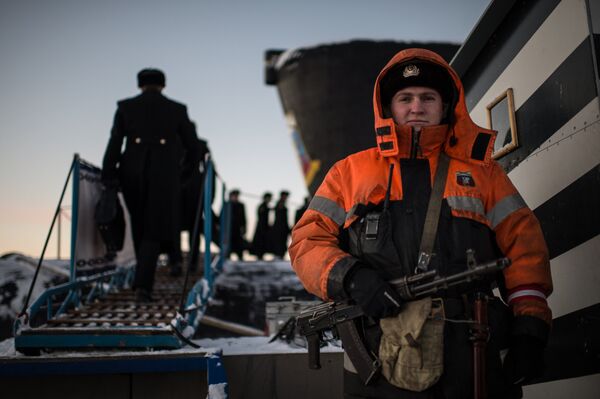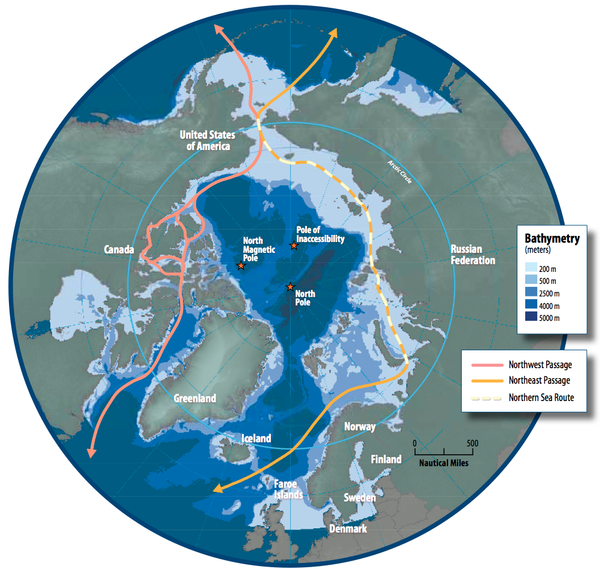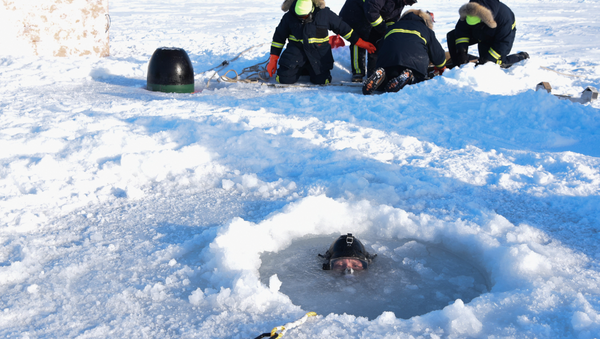The US Navy will begin South China Sea-style patrols in Russia’s Arctic maritime zones in a bid to challenge Moscow’s claims to the region, Navy Secretary Kenneth Braithwaite has announced.
“You will see the Navy operating again in a more permanent manner above the Arctic Circle,” he said, speaking to reporters this week, his remarks cited by Breaking Defense. “It’s sort of the same situation in the South China Sea that, when we look at freedom of navigation operations and the ability to operate in international waters, the United States claims the right to be able to do that,” the Navy chief clarified.
Braithwaite specified that US warships will need to “operate more assertively” in the Arctic in the years to come to challenge both Russia and China. According to the commander, warship patrols will be sent into the Barents Sea “and up toward [Russia’s] Kola Peninsula to be more present in that part of the world.”
The officer also mentioned the need to challenge Russia’s planned Northern Sea Route, a major prospective transport artery that will be able to transport sea-based cargoes between Europe and Asia much faster and cheaper than existing routes. “Again, where sea lanes open up in the northern passage [and the region] becomes navigable, the US Navy is going to guarantee that freedom of navigation exists for our partners,” he said.
Braithwaite made the comments as the Navy rolled out its new ‘A Blue Arctic’ strategy paper– a “strategic blueprint” for the department’s plans over the next 20 years to integrate with other branches of the US military, and partner with allied nations, to make certain that a US military presence in the Arctic is ensured. The document points out that the Arctic contains nearly one-third of the world’s undiscovered natural gas reserves and a trillion dollars’ worth of rare earth minerals. The paper also suggests, somewhat disingenuously, that part of the reason for the deployment will be to make sure that the Pentagon (the world’s single largest polluter), can help “preserve” the region’s natural environment.
The Pentagon strategy document points out that Russia is “investing heavily to enhance its Arctic defence and economic sectors, with a resultant multilayered militarisation of its northern flank,” and says that “by modernising its military capabilities and posture – particularly the Northern Fleet – Russia aims to improve command and control, infrastructure, and joint force employment to project power and defend its northern approaches.” The US, the document recommends, should respond to the developments.

The paper specifies that the Pentagon does not see Russia’s plans for the Northern Sea Route as legitimate, suggesting that they constitute an attempt at an “unlawful regulation of maritime traffic,” and calling the country’s military operations in the region “escalatory and non-transparent.”
Breaking Defense points out that a US attempt to challenge Russia in its own backyard “won’t be easy,” given the utter lack of US deepwater port capacity in Alaska – the US’s sole Arctic holding, as well as the existence of only one operational Coast Guard icebreaker – the 44-year-old Polar Star, compared with Russia’s fleet of more than 50 vessels. Russia also has at least 16 deepwater ports and 14 Arctic airfields, as well as a new northern Arctic military command.
Last month, Coast Guard Vice-Commandant Admiral Charles Ray told US lawmakers that in the absence of a heavy icebreaker fleet of its own, the US might lease such ships from Finland. The US is expected to get three new domestically made icebreakers by 2024, and eventually to amass a fleet of six icebreakers, and two new deepwater ports for Arctic use.
China Also a Threat, According to the Navy
Along with Russia, Braithwaite cited China as an emerging challenge to the US in the Arctic, pointing to the country’s construction of new icebreakers “at rates that we can’t match". The Navy’s Arctic paper mentions China’s investments in the construction of everything from cargo ships designed for Arctic conditions to liquefied natural gas tankers and nuclear-powered icebreakers, plus new port infrastructure to improve the country’s access to the region.
“China’s investments, global fishing fleet, and scientific, economic and academic linkages to the people and institutions of Arctic nations, including joint ventures with Russia, will probably continue to rise in the decades ahead,” the paper says.
Moscow has repeatedly expressed the need to keep the Arctic a field for peaceful cooperation, and has expressed its concerns with US plans to step up its activities in the region. At the same time, President Vladimir Putin has stressed that Russia has every right to build up its Arctic presence.
“Russia is a northern country. More than 70 percent of its territory is located in the northern latitudes. Everything that happens in the north is of particular interest to us… and I am not just talking about the development of the Northern Sea Route,” Putin said in a meeting last month.
Moscow has contributed vast economic and military resources to shore up its Arctic presence and to turn the region into a major driver for economic growth, both through exploration of its untapped resources, and the aforementioned trade route, which at a length of about 4,800km, will be able to transport goods between Europe and China between 40 and 60 percent faster than via the Suez Canal or the Cape of Good Hope.





